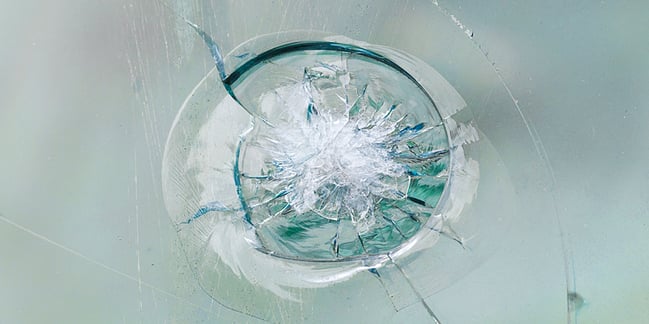
Security experts agree that glass is generally the weakest point in any building—from a school to a multi-tenant office structure. Windows and glass doors provide the easiest path for a criminal looking to break in.
Tempered glass provides better protection against breakage, but it can't hold up to a carbide tip tactical pen or a determined attack using a hammer or crowbar. Wherever security is a high priority, security window film and security screens provide an additional level of protection.
Security film is a polyester plastic coating that was originally designed to keep broken glass from shattering into harmful or even fatal shards. Now, manufacturers are making thicker films that can at least slow an attacker. Any delay provides time for an organization to contact first responders for help. Also, a film doesn't make a building look like a fortified prison in the way that steel bars can.
Depending on its thickness, professionally installed security film costs anywhere from $7 to $18 per square foot (estimated). The price for covering a 3-foot by 8-foot door ranges approximately from about $168 to $450. Security door and window film must be professionally installed.
Security screens, made of stainless-steel wire mesh, are attached to windows and doors to provide a nearly impenetrable barrier. While the screens won't stop bullets, they do resist further cutting making it almost impossible to create an opening large enough to reach through and unlock a door or window. The cost of security screens is likely to be a bit more expensive than film.
Neither security film or screens are intended to replace other critical layers of security at potential entry points, but rather to add another layer of safety and security. And not all glass necessarily needs this added protection. Windows on higher levels are unlikely sources of entry for a criminal.
There is also, of course, bulletproof glass available for locations requiring an extremely high level of security. The glass is available in eight levels, with ratings based on the caliber of bullets it can stop. Levels one through three are what you'll see in most banks, convenience stores and law enforcement offices. Higher levels are typically used only in government and military facilities. A big reason for that is cost; bulletproof glass costs as much as $45 to $85 per square foot, plus installation costs.
